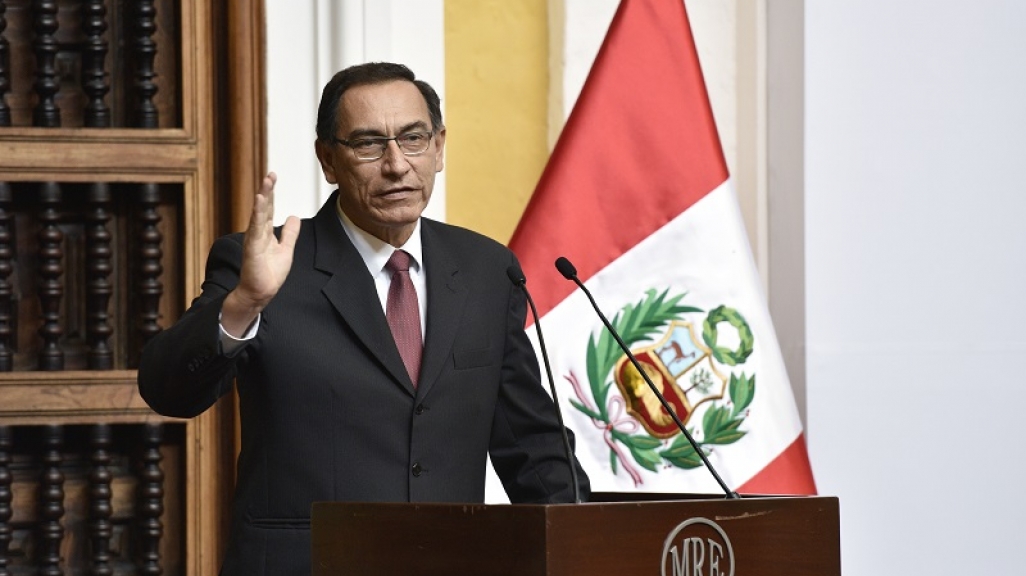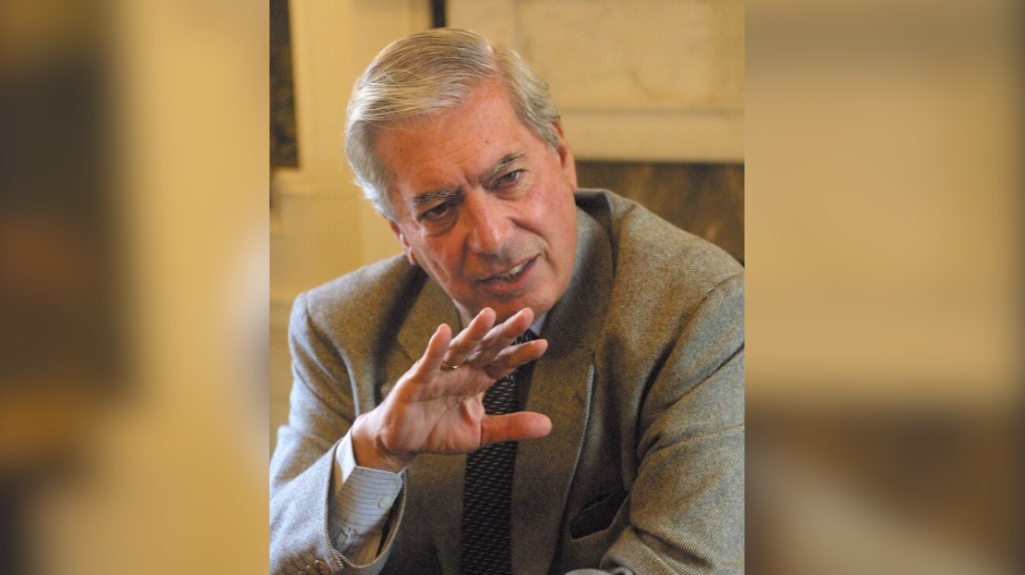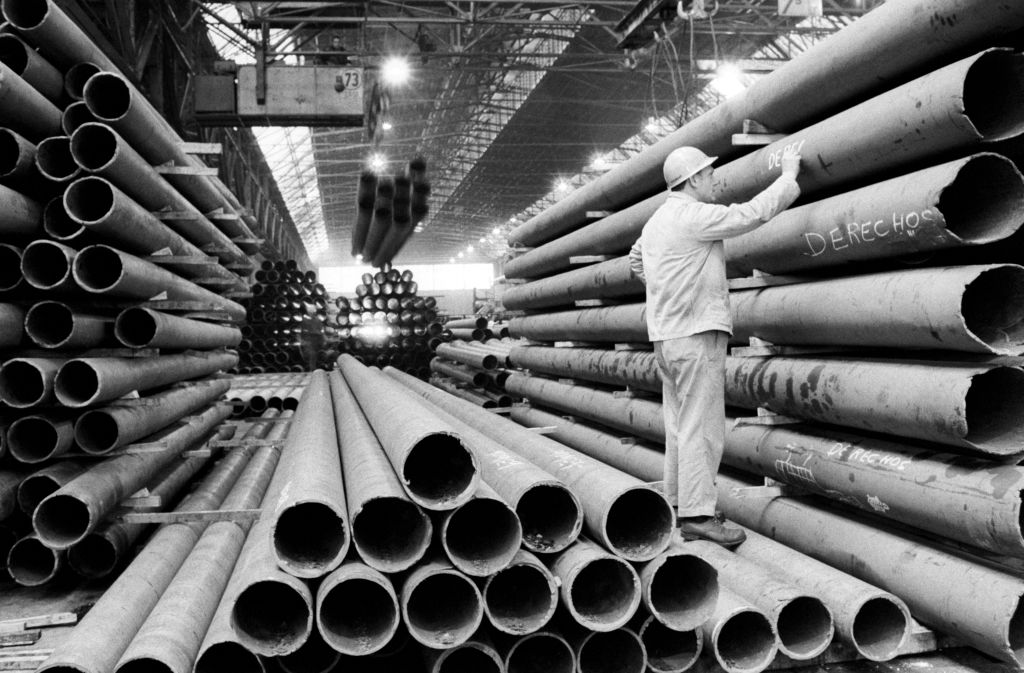Summary: Lima 2016 – Building Peru, The Road to the UN's 2030 Agenda for Sustainable Development
Summary: Lima 2016 – Building Peru, The Road to the UN's 2030 Agenda for Sustainable Development
Ministers from Peru’s economy, transportation, and energy ministries spoke alongside private-sector leaders about how to boost the country’s development.
Welcoming Remarks
- Susan Segal, President and CEO, Americas Society/Council of the America
- Eduardo Ferreyros, Minister, Foreign Trade and Tourism
Keynote
- Claudia Cooper Fort, Vice Minister of the Economy, Ministry of Economy and Finance
Panel 1: Economic Outlook of Peru
- Oscar Rivera, Chairman of the Board of the Peruvian Bank Association (ASBANC), First Vice President of the National Federation of Private Business Institutions (CONFIEP)
- Gabriel Manzano, Country Markets Head, Citibank del Perú
- Fernando Bravo, Director for Andean Region, Goldman Sachs
- Enrique Castillo, Director and Anchor of Agenda Política, Canal N (moderator)
Keynote
- Gonzalo Tamayo Flores, Minister, Energy and Mines of Peru
Panel 2: Peru and the UN’s 2030 Agenda for Sustainable Development
- Roque Benavides, CEO, Buenaventura
- Augusto Baertl, President, PetroPeru
- Jasmin Eymery, Public Affairs & Sustainability Manager, Latin America GE
- Martin J. Alcalde Pineda, Enviromental and Social Manager, Geopark
- Diego de la Torre, President, United Nations Global Compact in Peru (moderator)
Closing Remarks
- Ricardo Luna, Minister, Foreign Affairs (introduction)
- Martín Vizcarra, First Vice President of Peru and Transport and Communications Minister
“Peru is a door into South America for Asia,” thanks to its participation in the Asia-Pacific Economic Cooperation and Trans-Pacific Partnership, said AS/COA President and CEO Susan Segal in her remarks to open the organization’s 2016 Latin American Cities conference in Lima. She commended new President Pablo Pedro Kuczynski’s ambitious infrastructure plan, and emphasized that improving diversity and women’s inclusion are critical to long-term development and growth.
Next up, Peruvian Minister of Trade and Tourism Eduardo Ferreyros talked about how several of the administration’s goals lined up with UN Sustainable Development Goals, notably boosting access to clean water (SDG 6) and improving economic inclusion (SDG 8). Each goal should be addressed, not just from the social and economic perspectives, but the environmental one as well, he said. Private investment and innovation play a key role in meeting these goals.
"It is our promise, that by the bicentennial, we will have a more just, united, and equal society." VM Ferreyros of @MINCETUR. #Peru2030
— AS/COA Online (@ASCOA) October 3, 2016
Muy interesado en profundizar el camino del #Peru #Peru2030 cumplir su Agenda 2030 @ASCOA @PNUDperu @ONU_Peru pic.twitter.com/fXJoYO9A14
— Edo Stork (@EdoStork) October 3, 2016
Economy Vice Minister Claudia Cooper Fort made the case in her keynote, as well as in the following panel, for why bringing more businesses into the formal economy was critical for the country’s bottom line as it would increase the country’s tax base, lower the tax burden on the small share of formal businesses that are currently shouldering a disproportionate share of it—administered through the general sales tax, known as IGV—and give more macroeconomic stability. She also outlined the $18.8 billion government plan for 13 megaprojects to meet UN 2030 SDG targets in her presentation.
El IGV es un impuesto alto para una empresa pequeña en nuestro país, ¿Como mejoramos o que mecanismo usamos? #peru2030
— Nadia Ramos (@ramosnadia) October 3, 2016
VM Claudia Cooper: para cumplir con los #ODS de ONU, @MEF_Peru busca fortalecer las relaciones entre el negocio y el estado.#Perú2030 pic.twitter.com/PXoCiGgc3F
— AS/COA Online (@ASCOA) October 3, 2016
Despite challenges, Peru remains well positioned within Latin America and is an attractive emerging market to international investors, said Goldman Sachs’ Fernando Bravo on the following economic panel, which was moderated by Canal N’s Enrique Castillo. From the point of view of the international investor, he said, Brazil and Colombia were “complicated” and “very complicated,” respectively, in light of recent political events; Chile is growing more slowly; and Argentina is arguably a slightly saturated investment market since coming out of default this year but still a no-go for many investors. Citibank’s Gabriel Manzano commended Peru for reducing its public debt from almost 50 percent of GDP in 2002 to 23 percent in 2015. Oscar Rivera, board chair of the Peruvian Banking Association, underscored the need to bring more Peruvians into the formal economy, saying that 74 percent of workers—11.5 million people—are informally employed, the highest rate of informality among Pacific Alliance countries.
"El inversionista internacional ve a Peru como opcion de diversificacion" #Peru2030 @ASCOA @PactoGlobalPERU
— Diana Chávez (@DianaChavezPM) October 3, 2016
#Peru2030 @ASCOA Manzano de Citibank: Perú en estos momentos esta en una posición privilegiada para el financiamiento de infraestructura.
— Pablo del Aguila (@caminerosperu) October 3, 2016
Bravo cite un informe que llamó a Perú “el lugar más dulce entre las economías agrias de América Latina."#Peru2030 https://t.co/DHO3puAoIj
— AS/COA Online (@ASCOA) October 3, 2016
In his presentation, Energy and Mines Minister Gonzalo Tamayo outlined the ministry’s priorities and its renewed leadership in promoting Peru’s sustainable development. “There nothing worse than a power outage,” said Tamayo, adding that the government is working on diversifying its energy resources, making its distribution more efficient, and expanding access in underserved regions. Tamayo mentioned how families in the capital city of Lima consume three times as much electricity as those in rural areas, and how liquefied petroleum gas, as well as solar and wind power, could help close that gap.
#EnVivo Ministro Tamayo: Uno de los grandes retos hacia el 2018 es lograr una minería más amigable con el medio ambiente. #Perú2030
— MemPeru (@MemPeru) October 3, 2016
With respect to mining, which accounts for a majority of Peruvian exports, the minister noted the recent drop in investments in the sector, but said he expects a recovery by 2018.
After the minister, the president of the UN Global Compact in Peru, Diego de la Torre, moderated a panel on the private sector’s role in supporting and promoting Peru’s sustainable development goals. Jasmin Eymery of GE Latin America started off by highlighting the opportunities for coordinated public-private sector projects, with examples of GE technologies that have been adapted to Peru’s specific local needs, such as new mining equipment. Geopark’s Martin J. Alcalde Pineda added that companies should invest in the smaller local economies that exist outside of the capital.
De cara a la #Agenda2030 Peru planea reducir 10 puntos la informalidad laboral @MEF_Peru @CONFIEP @PactoGlobalPERU @ASCOA
— Diana Chávez (@DianaChavezPM) October 3, 2016
The government also needs to step up its efforts, according to Buenaventura CEO Roque Benavides. He said achieving sustainability boils down to combatting poverty, and to do that, the government has to decentralize and “not turn its back to rural communities.” Francisco Augusto Baertl Montori, the president of Peru’s state-owned oil company, followed with the promise that PetroPeru is working to be environmentally, socially, and financially responsible.
In closing remarks, Peru’s Vice President, Martín Vizcarra reiterated the country’s strong points, as well as the challenges faced. He cited the World Economic Forum’s 2016–2017 Global Competitiveness Report, noting Peru’s relatively good ranking on the macroeconomic front, but cautioning on its underperformance when it came to the strength of its its institutions.
#Ahora: Vicepresidente @MartinVizcarraC destaca la importancia de la suma de esfuerzos entre los sectores público y privado. #Perú2030 pic.twitter.com/SR3pMA4V7e
— Cancillería del Perú (@CancilleriaPeru) October 3, 2016









